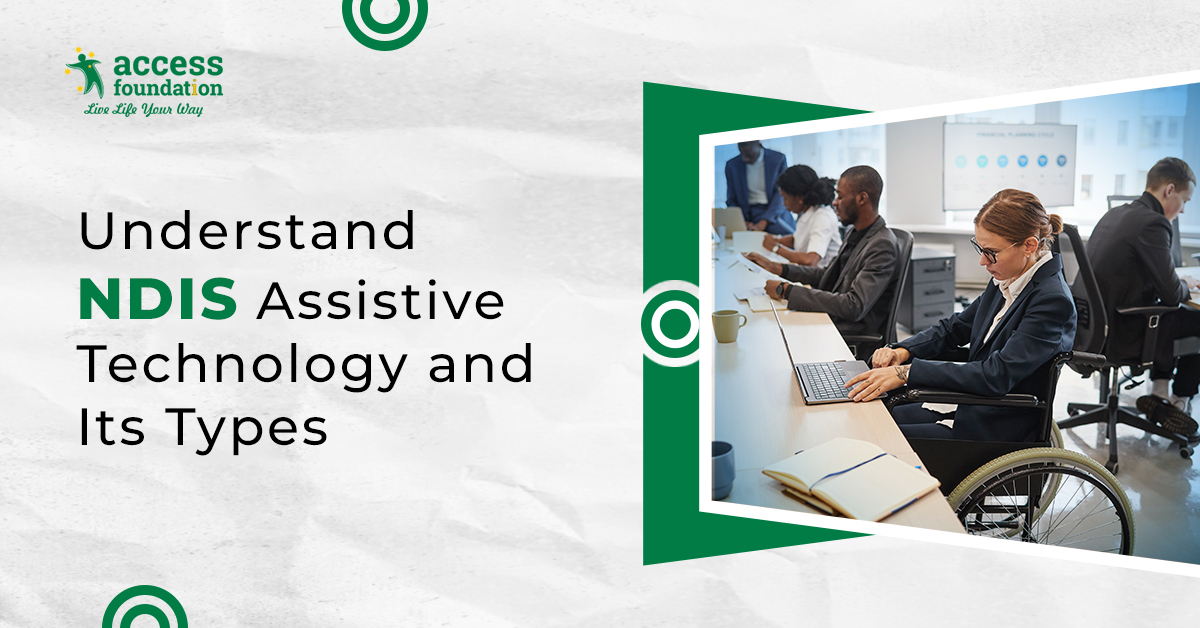
NDIS Assistive Technology and Its Types - A Definitive Guide!
In today's digital age, assistive technology is decisive in enhancing disabled individuals' lives. The NDIS (National Disability Insurance Scheme) in Australia recognizes the significance of assistive technology, making it more accessible to those in need. Whether it is a wheelchair, hearing machine, transportation equipment, house cleaning, prosthetics, etc., the organization ensures that every disabled individual gets the most of it to lead an easy and flexible life.
In this comprehensive guide, we will scrabble around NDIS Assistive Technology. We will explore its various types to help you better understand how it can make a difference in the lives of disabled people.
What is Assistive Technology (AT)?
Assistive Technology (AT) refers to the equipment or devices that disabled people use to perform their daily tasks. AT ranges from simple tools for hand movement to communication to computer programs and mobile apps that enhance the mobility of people with disabilities. NDIS Assistive Technologies aims to improve their independence, safety, and overall quality of life.
By using Assistive Technologies, you can do things you could not do due to your disabilities. AT brings significant development in disabled people's lives, including:
-
It reduces third-party help on every task
-
Enhance your safety and boost confidence to perform tasks by self
-
Allow you to do tasks independently
-
Bring more personalized option
Different Types of Assistive Technology
Let's explore some different and vital types of NDIS Assistive technology:
Vision Assistive Technology
The Vision Assistive Technology prospects include various advanced vision tech stacks that help disabled people with vision impairments.
Some of the example includes:
Magnifiers - It help them with low vision read print materials such as books, newspapers, and labels.
High-contrast displays - This version of AT makes it easier for disabled people with low vision to see computer screens, TV screens, and other electronic displays.
Screen Readers - Feature-rich screen readers can read text aloud from electronic documents and websites, making it possible for people with partial blindness or low vision to access information online.
Hearing Assistive Technology
It is the same as Vision AT but with a different context and motive. The Hearing AT helps disabled people with hearing impairments to communicate.
Hearing Aids - Tiny electronic devices that amplify sound and make it easier to hear. They are worn in or around the ear and can be either behind-the-ear (BTE) or in-the-ear (ITE). There are also mini BTE and completely-in-canal (CIC) hearing aids.
Cochlear Implants - These implants are surgically implanted devices that provide a sense of sound to people who are profoundly deaf or have severe hearing loss. They transform sound waves into electrical signals that stimulate the auditory nerve, allowing the person to hear sounds.
Mobility Aids
Mobility aids are designed to assist individuals with mobility impairments. These include:
Wheelchairs and powerchairs - Specially designed chairs for disabled individuals to move here and there and roam around without human support.
Mobility scooters - A mobility scooter is a motorized vehicle that is similar in design to a motor scooter but is designed as a personal mobility aid.
Communication Aids
Communication aids help individuals with speech and language impairments to communicate effectively. These include:
Speech-generating devices - Speech-generating devices, also known as voice output communication aids, are electronic systems that supplement speech or writing for severe speech impairment individuals.
Text-to-speech software - It converts text to speech to help disabled individuals easily recognize and understand the sayings more quickly than usual.
Daily Living Aids
Daily living aids make everyday tasks easier for people with disabilities. Examples are:
Adaptive kitchen utensils and tools - Modern-age kitchen essentials tools to enhance agility. These tools will help complete work in less time compared to usual.
Personal care devices - Personal care devices like hair/beard trimmer, eComb, and massager will ensure seamless and support-free assistance.
Choose the Best AT Provider Near You!
Assistive Technology has opened up a world of possibilities for people with disabilities. The different types of assistive technology available can provide a range of practical measures to those who need it - from speech-generating devices to providing access to computers and the internet. With these capabilities, disabled individuals can bring more freedom to their everyday lives.
Access Foundation is a registered NDIS provider featuring an enthusiastic team of professionals who have mastered Assistive Technology. Irrespective of your disability type,they ensure the right assistive technology to help your day-to-day tasks easier. They teach you the best usage of all AT to achieve your daily target.
If you want to explore more about NDIS Assistive Technology, contact us at (08) 6243 9569 or email us at info@accessfoundation.com.au

